Procedural generation in Virtual Reality

Runtime procedural 3D is still mainly used for the same purposes: world generation, player creation and world destruction. The goal of this project was to explore runtime procedural 3D in which the artist can modify the world using VR controllers, giving artists more tools to build the world than just the editor and inspector.
Virtual Reality escape room
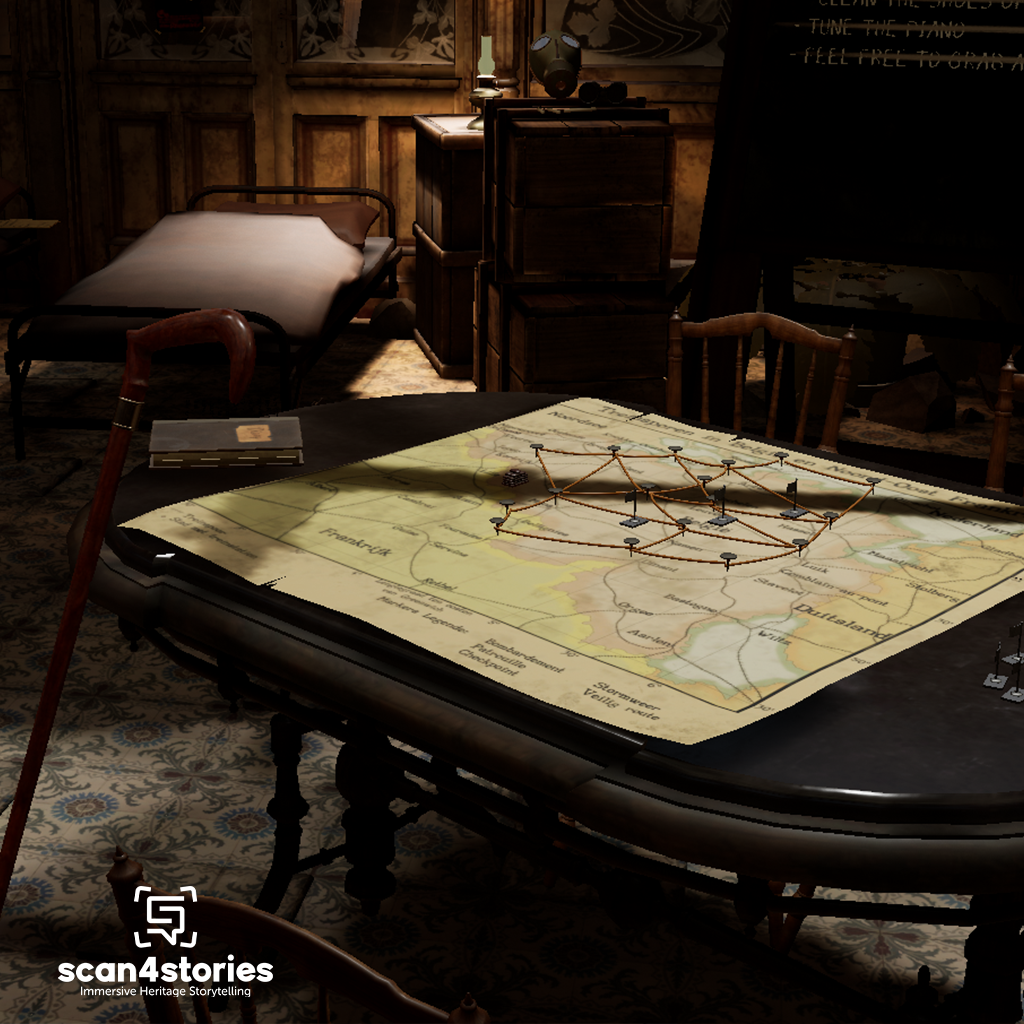
For some prototypes, specific attention was paid to historical stories and events. How can Immersive Technology help to tell these stories in an interactive way? Can we make visitors feel like they are part of this? Allowing them to discover the story themselves through certain interactions without presenting it to them ready-made?
Deze vragen gaven, in combinatie met enkele van de ideeën die tijdens de brainstormsessies werden geopperd, aanleiding tot de ontwikkeling van twee prototypes waarbij role-playing, groepsbeleving, interactiviteit, gameplay en Storytelling centraal stonden.
VR Tracked interactable objects
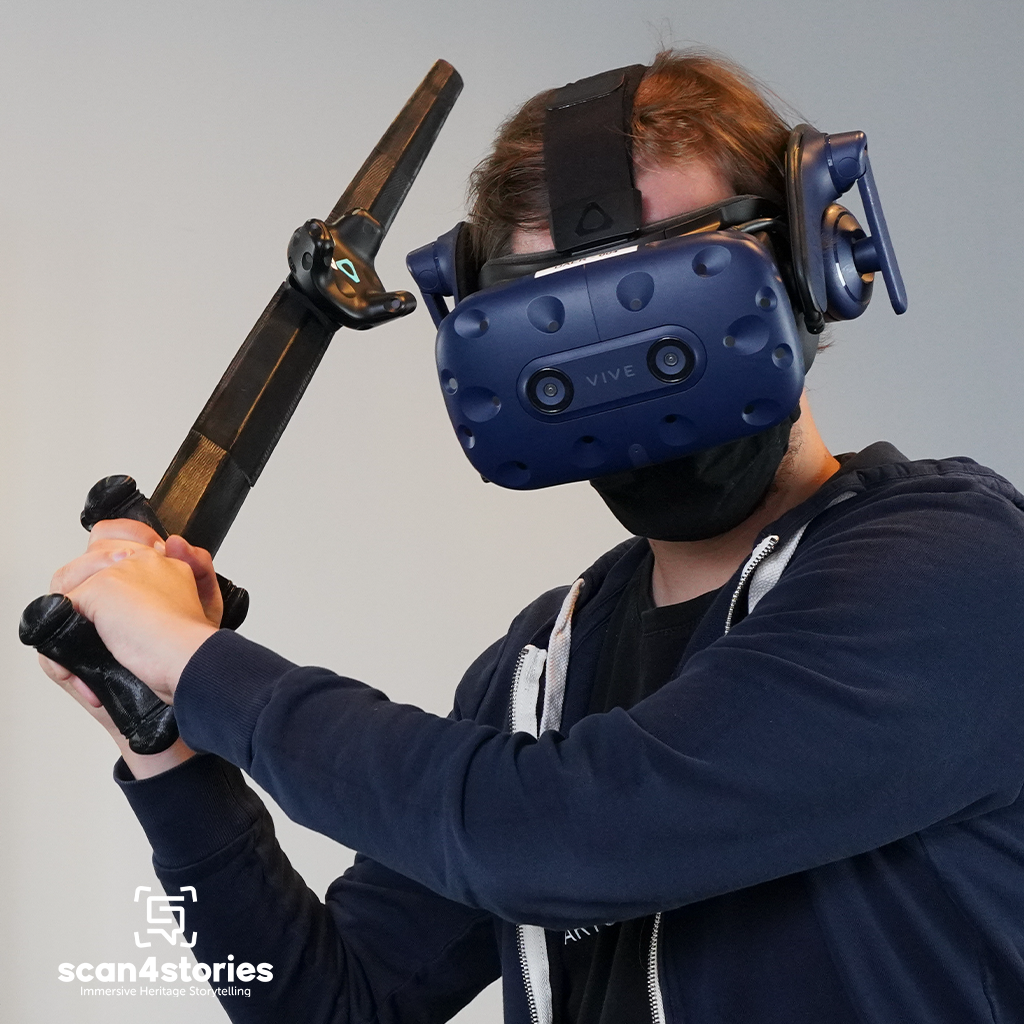
One of the questions asked during the research concerns the possibilities of Immersive Technology for bridging the gap between the physical and virtual world. Can we preserve the character of physical objects and enable interactions in the virtual world that are otherwise impossible? Very often we see beautiful museum objects in closed display cabinets, we see beautifully illustrated books under glass domes, historical weapons under lock and key and so much material that is invisible in the archives. How can we still give the visitor the chance to hold these objects, to let them use these objects or to enable interaction with the objects?
Virtual Reality Collaborative environment
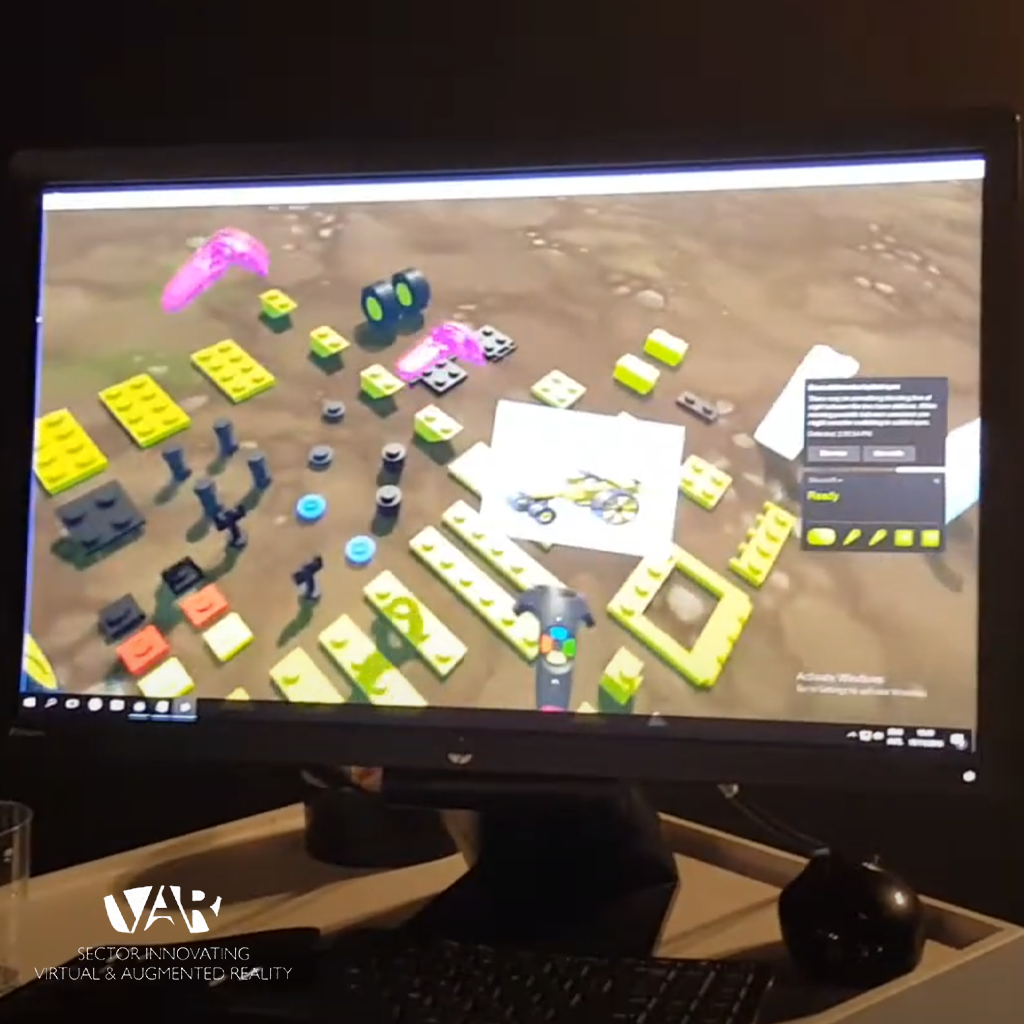
With this concept we want to demonstrate the added value of collaborative training. Again using the Unity game engine, we can have two players, regardless of their physical location, working together in one virtual world. For the prototype, it was decided to let the users assemble a LEGO car together on the basis of a step-by-step plan and productivity tools. Within a professional context, remote training could be provided via this method, independent of the physical location of the users.
Virtual training: 360° video versus interactive VR
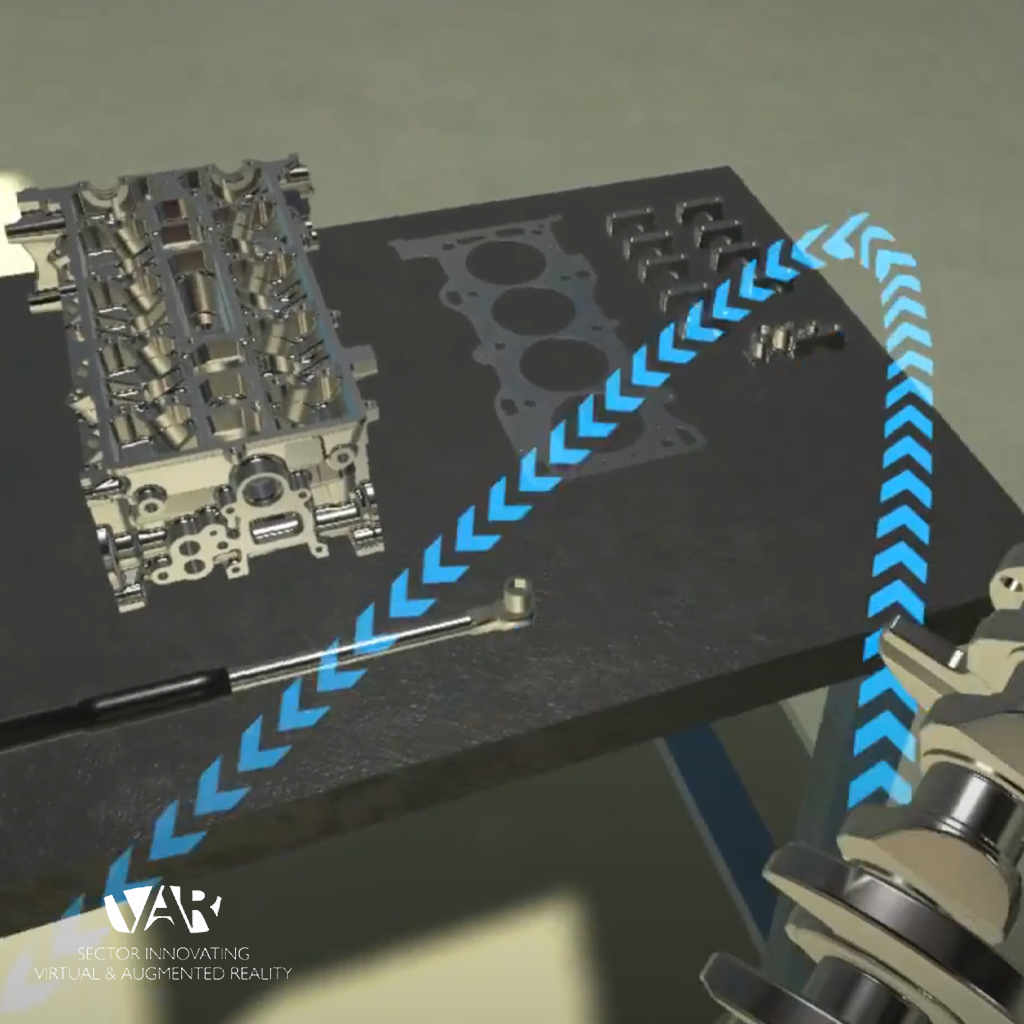
In addition to the developments that are happening in the field of interactive virtual reality, it is also possible to capture an environment using 360° photo and video. In both cases, the user can view the virtual environment using a virtual reality headset. In collaboration with Thomas More and their parallel TETRA project on 360° video, two prototypes were developed where the user can digitally follow the assembly of an engine block. In the first prototype, the user can follow the assembly using a 360° video, in the second, the user can perform the assembly virtually himself in an interactive virtual reality training environment. The intention is to test these two prototypes and compare both methodologies within the new joint TETRA project on ‘Immersive Training’, which will start from September 2018.
Virtual link: watch cross-platform in VR
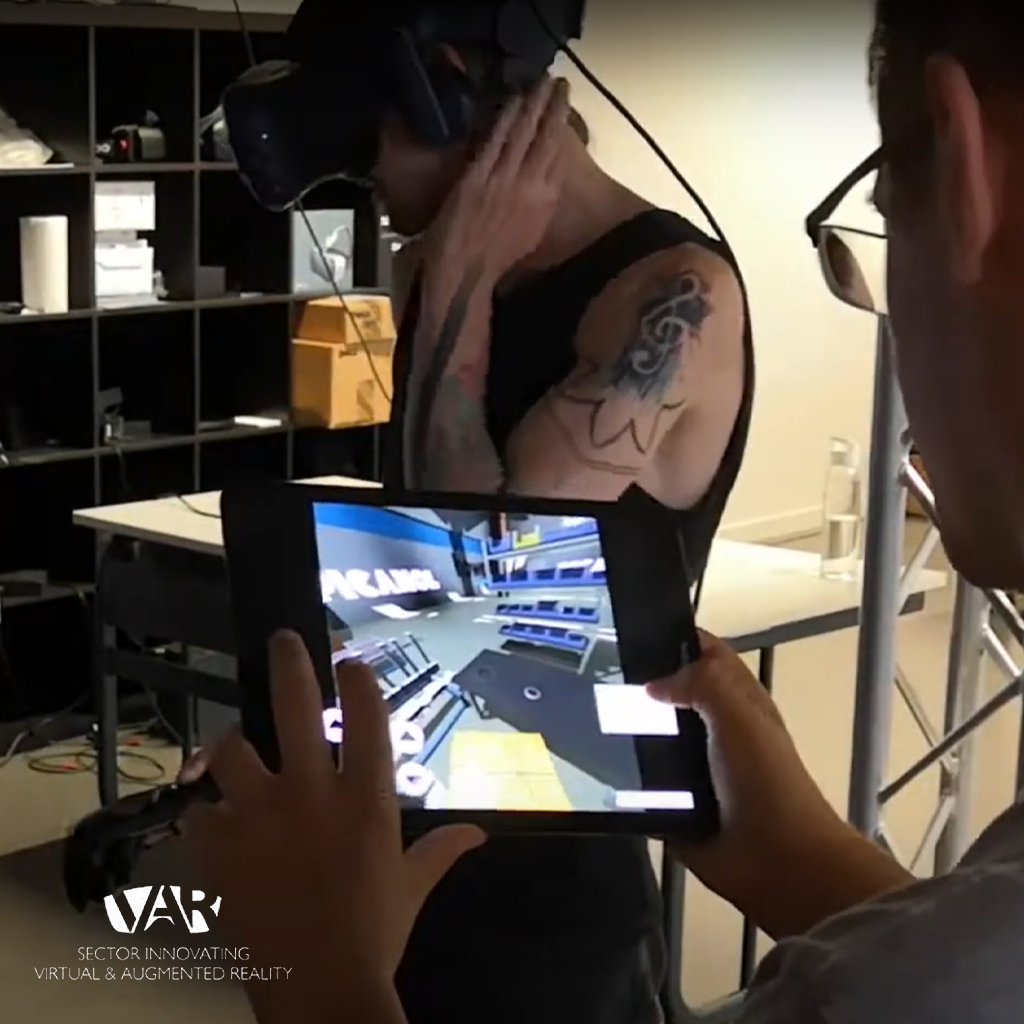
We developed a collaborative platform with the Unity game engine with which a supervisor can support the person wearing a virtual reality headset with his tablet or smartphone. We have the option to watch from a first person perspective or to choose a position in the virtual space. This prototype shows how we can easily interact with multiple users within an isolated experience such as virtual reality, even without having to wear a headset.
Virtual Reality Training: Picanol Case
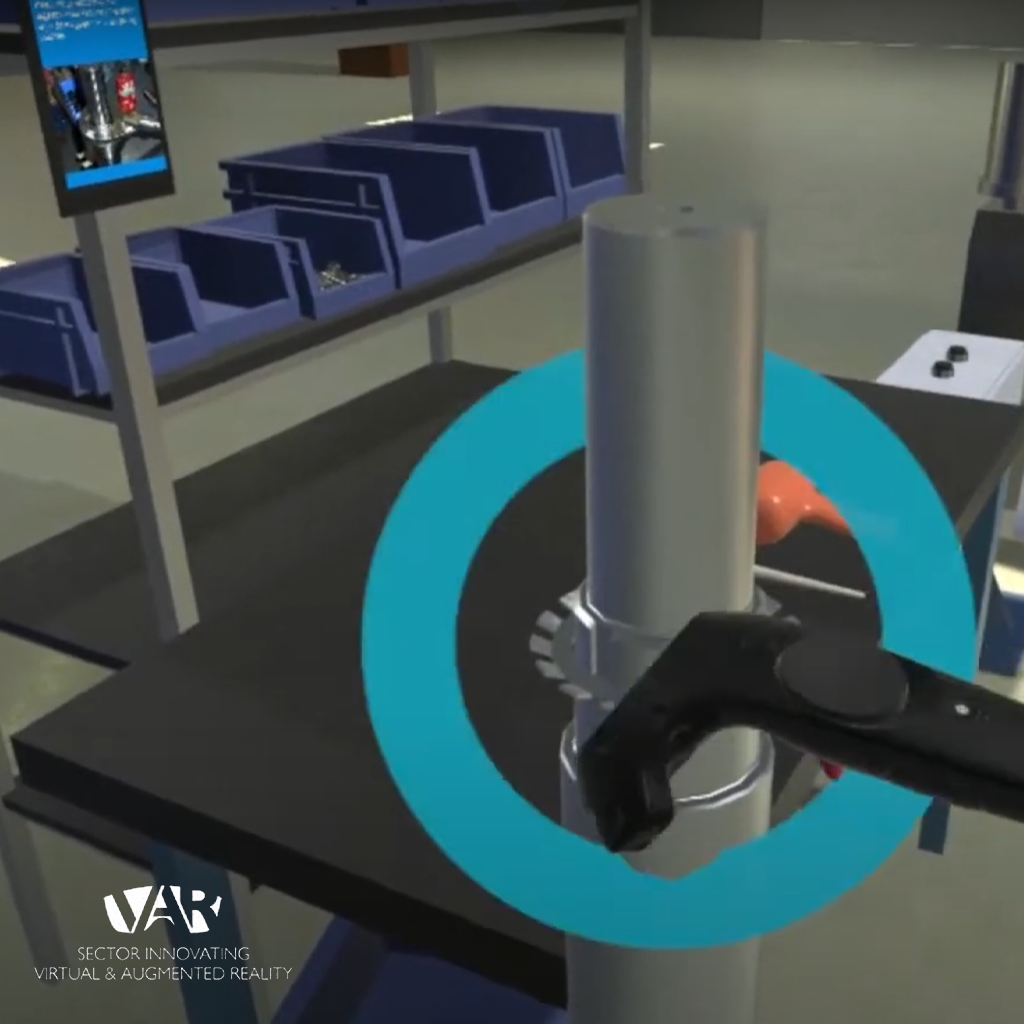
Together with Dana, Picanol, CNH industrial, Barco and Cronos aan de Leie, game technology was brought in to investigate a new form of training. A combination of a scanned working environment, cad models and an interactive game engine made it possible to prototype a Virtual Reality Training framework. Employees can learn to assemble virtually using a ‘digital twin’ of the production line. Here you can see a video of the VR training framework in action based on a part of a loom at Picanol.
Virtual Reality Training: Dana Case
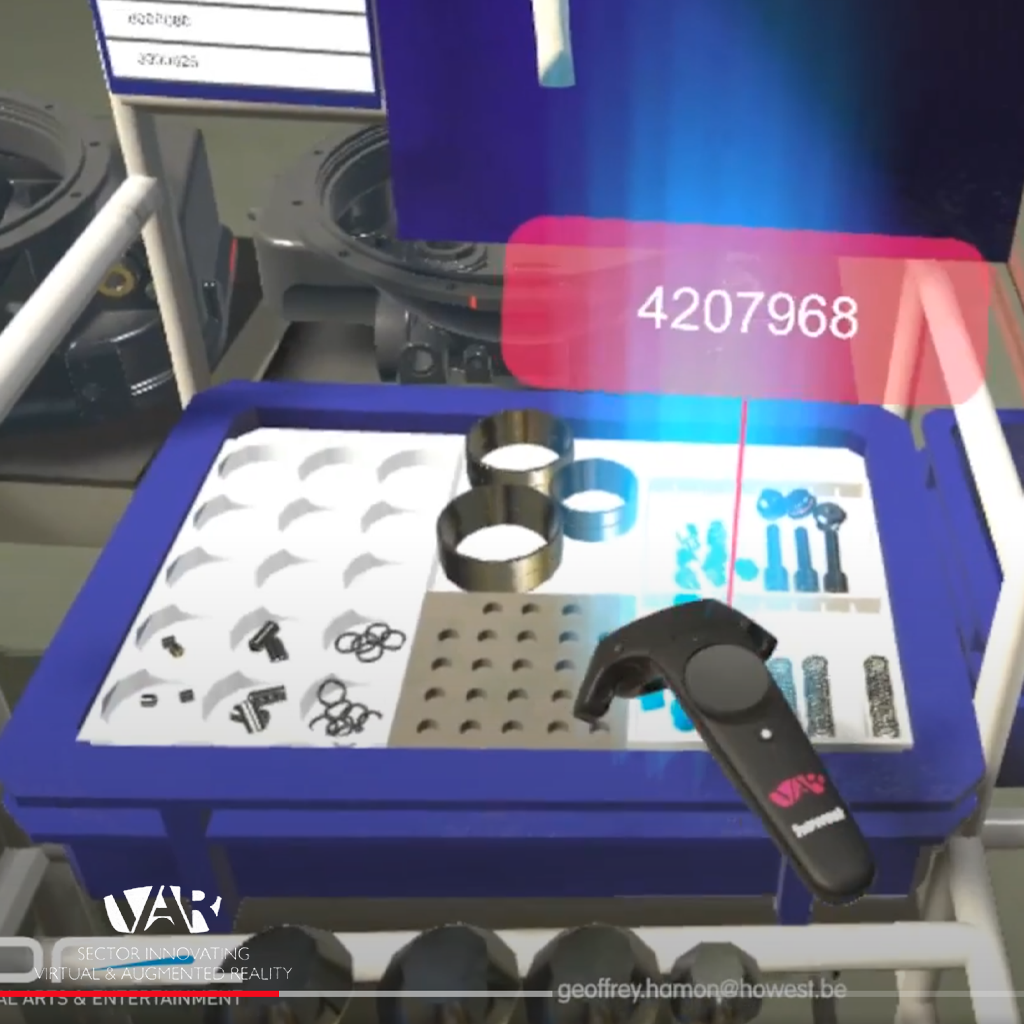
Together with Dana, Picanol, CNH industrial, Barco and Cronos aan de Leie, game technology was brought in to investigate a new form of training. A combination of a scanned working environment, supplied cad models and an interactive game engine made it possible to prototype a virtual reality training framework. Employees can learn how to assemble virtually using a digital twin of the production line.


